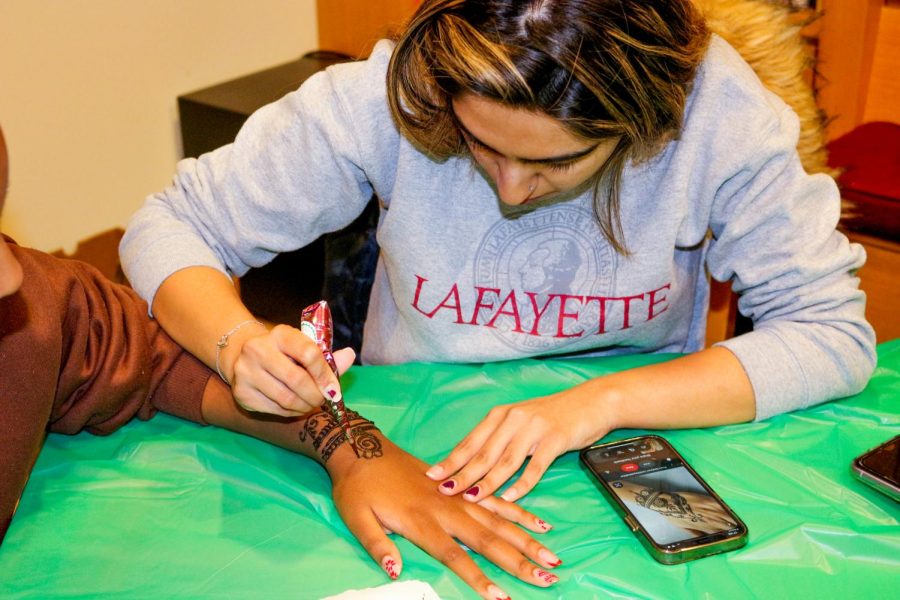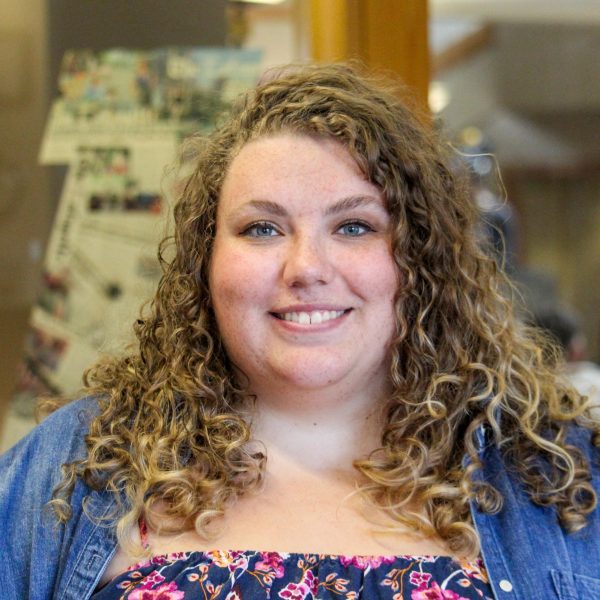International Student Association (ISA) celebrated International Education Week with everything from rolling sushi to drawing henna. The week serves as a way to teach students about the customs and traditions of different cultural groups.
“The aim of International Education Week is, one, to educate, of course, but the other is to foster cultural exchange between the international student community and the other communities on campus through fun activities,” Sidath Chandrasena ‘25, the logistics chair of ISA, said.
“International Education Week is kind of a tradition for ISA, but the idea is the same every year: to bring out and highlight the cultures we have in ISA to the wider campus community, and at the same time, educate people on global issues and different cultures that they might not have been exposed to, considering that Lafayette is a [primarily white institution],” Katelin Seber ‘23, co-vice president of ISA, added.
The week kicked off with ISA’s annual Sushi-Thon, during which students learned how to make sushi alongside Upper Farinon chefs.
“Sushi-Thon is an educational aspect of this week where we get to see how certain cultures carefully make some of the things that we eat often and don’t really think about what the origins of those foods are,” Chandrasena said.
The organization’s efforts this week also featured a “Latin America in Movies” event highlighting portrayals of Hispanic people in television and film.
Daniel Andrade ‘25, events and social chair for ISA, described the event as “talking about the bad representations, some of the good ones and … a little about the funny ones.”
According to Andrade, the group discussed portrayals in popular television shows like “Modern Family,” “Jane the Virgin” and “Breaking Bad,” as well as movies like “Coco” and “Encanto.” The event also left room for participants to discuss their own personal experiences with stereotyping.
Wednesday night’s event was an installment in ISA’s ongoing “Decolonizing” series. This event focused on decolonizing the beauty practices of South Asia by explaining the history and cultural importance of different items.
For example, Satuna Mowrin ‘24 discussed the cultural history of henna.
“There’s a huge conversation of cultural appropriation versus cultural appreciation with [henna],” she said. “I don’t think it’s cultural appropriation personally to get your henna done no matter what your race or ethnicity is — I think it is [appropriation] when you misuse it and make it into a fetishized thing.”
Mowrin then spent the evening drawing henna for students at the event.
Swati Pandey ‘23, one of the event’s organizers, spoke about her experience with bindis. A bindi is placed on the center of the forehead, which, according to Pandey, is also the “center of your consciousness.”
“So what my grandmother and what my mother were doing every morning was plugging into that inner consciousness and making sure that they will treat the world with grace, including themselves, and that’s a beautiful way to think about things,” Pandey said of her family’s use of the bindi.
Pandey also spoke on the dismantling of beauty standards.
“There is no standard for beauty. It’s not just something that’s extrinsic. It’s an internal, personal journey,” she said.
The week will conclude with an ISA Jeopardy Night featuring international-themed questions, and the organization’s annual “When Worlds Collide” semi-formal at Pfenning Alumni Center.
Due to the campus-wide power outage on Tuesday, a discussion with professor Rachel Goshgarian of the history department regarding the border conflict between Armenia and Azerbaijan has been rescheduled for next Thursday.






















































































































